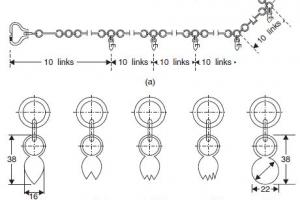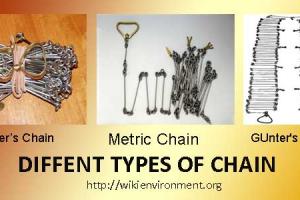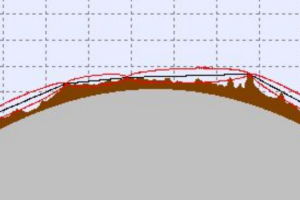Horizontal and Vertical Curves in Surveying
Definition of Curves in Engineering Surveying
Curves are provided whenever a road changes its direction from right to S (and vice versa) or changes its alignment from up to down (and vice versa). Curves are a critical element in pavement design. They are provided with a maximum speed limit that should lie followed very strictly. Following the speed limit becomes essential as the exceed in speed may lead to the chances of the vehicle becoming out of control while negotiating a turn and thus increase the odds of fatal accidents. Also, it is very necessary that appropriate safety measures be adopted at all horizontal and vertical curves to make the infrastructure road user-friendly and decrease the risks of hazardous circumstances.
The low-cost safety measures that can be adopted at curves included chevron signs, delineators, pavement markings, flexible posts, fluorescent strips, road safety barriers, rumble strips, etc.
Types of Curves in Surveying
There are two types of curves provided primarily for the comfort and ease of motorists on the road namely:
- Horizontal Curve
- Vertical Curve
Horizontal Curves in Surveying
Horizontal curves are provided to change the direction or alignment of a road. Horizontal Curves are circular curves or circular arcs. The sharpness of a curve increases as the radius is decreased which makes it risky and dangerous. The main design criterion of a horizontal curve is the provision of an adequate safe stopping sight distance.
Types of Horizontal Curve:
Simple Curve:
A simple arc is provided in the road to impose a curve between the two straight lines. A simple curve is a basic type of horizontal curve that consists of a single arc or curve connecting two straight sections of a road. It is characterized by a constant radius throughout the curve. Simple curves are commonly used to introduce gradual changes in direction, allowing vehicles to smoothly transition from one straight segment to another.
Compound Curve:
Combination of two simple curves combined together to curve in the same direction. A compound curve is formed by combining two or more simple curves in the same direction. This type of curve is employed when a sharper change in direction is needed compared to a simple curve. Each simple curve in a compound curve has its own radius, and they are connected to create a continuous curving path. Compound curves are useful in situations where space constraints or terrain require a more compact curve.
Reverse Curve:
Combination of two simple curves combined together to curve in the same direction. A reverse curve is similar to a compound curve in that it consists of two or more simple curves combined together. However, in a reverse curve, the curves change direction, creating an "S" shape. This type of curve is often used in areas with limited space or where road alignment needs to navigate around obstacles. Reverse curves require drivers to make consecutive turns in opposite directions.
Transition or Spiral Curve:
A curve that has a varying radius. It provided a simple curve and between the simple curves in a compound curve. A transition or spiral curve is a specialized type of curve designed to provide a smooth and gradual transition between a straight road section and a curved road section, or vice versa. It is characterized by a varying radius that changes gradually along the curve. The purpose of a transition curve is to minimize abrupt changes in direction and allow for a more comfortable and safe transition for drivers. Transition curves are typically used in highways, railways, and other transportation systems.
While turning a vehicle is exposed to two forces. The first force which attracts the vehicle toward the ground is gravity. The second is centripetal force, which is an external force required to keep the vehicle on a curved path. At any velocity, the centripetal force would be greater for a tighter turn (smaller radius) than a broader one (larger radius). Thus, the vehicle would have to make a very wide circle in order to negotiate a turn.
This issue is encountered when providing horizontal curves by designing roads that are tilted at a slight angle thus providing ease and comfort to the driver while turning. This phenomenon is defined as super elevation, which is the amount of rise seen on a given cross-section of a turning road, it is otherwise known as slope.
In summary, the types of horizontal curves include simple curves, compound curves, reverse curves, and transition or spiral curves. Each type serves a specific purpose in road design, accommodating different turning radii and providing smooth transitions between straight and curved sections of a roadway.
Vertical Curves in Civil Engineering Surveying
Vertical curves are provided to change the slope in the road and may or may not be symmetrical. They are parabolic and not circular like horizontal curves. Identifying the proper grade and the safe passing sight distance is the main design criterion of the vertical curve, crest vertical curve the length should be enough to provide safe stopping sight distance and in the sag vertical curve the length is important as it influences the factors such as headlight sight distance, rider comfort, and drainage requirements.
Types of Vertical Curve:
Sag Curve
Sag Curves are those which change the alignment of the road from uphill to downhill. A sag curve, also known as a concave curve, is a type of vertical curve on a roadway that transitions from a higher grade (uphill) to a lower grade (downhill). It is called a "sag" curve because the road profile creates a sag or dip in the roadway. The center of the curve is the lowest point, and the grade gradually increases as the curve transitions back to the original higher grade. Sag curves are typically used to provide smooth and safe transitions for vehicles traveling downhill.
Crest Curve/Summit Curve
Crest Curves are those which change the alignment of the road from downhill to uphill. In designing crest vertical curves it is important that the grades be not] too high which makes it difficult for the motorists to travel upon it. A crest curve, also referred to as a summit curve, is the opposite of a sag curve. It is a type of vertical curve that transitions from a lower grade (downhill) to a higher grade (uphill). The term "crest" is used because the road profile creates a crest or hilltop in the roadway. The center of the curve is the highest point, and the grade gradually decreases as the curve transitions back to the original lower grade. Crest curves are commonly used to provide smooth and safe transitions for vehicles traveling uphill.
Both sag curves and crest curves are essential elements in road design as they help ensure the safety and comfort of drivers by minimizing abrupt changes in slope. They allow vehicles to smoothly navigate changes in grade, preventing sudden variations in vehicle speed or discomfort for passengers. Properly designed and executed vertical curves are crucial in maintaining good visibility, reducing driver fatigue, and promoting safe and efficient travel on roadways.
In summary, sag curves and crest curves are two types of vertical curves commonly employed in road design. A sag curve transitions from a higher grade to a lower grade, while a crest curve transitions from a lower grade to a higher grade. Both curves play a crucial role in ensuring safe and comfortable travel by minimizing abrupt changes in slope and facilitating smooth transitions for vehicles.








